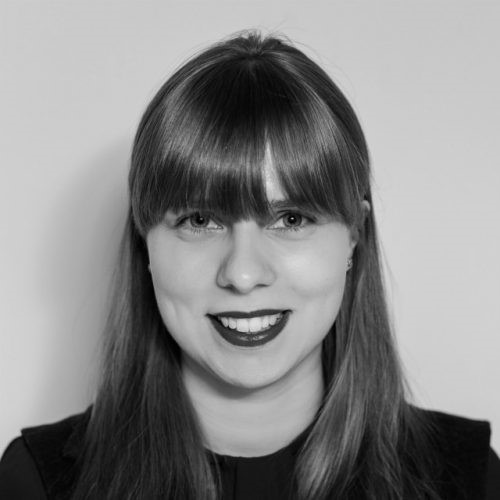
IWA Publishing in conjunction with the International Water Association’s Young Water Professionals is happy to announce a new initiative spotlighting the work of Young Water Professionals and showing how the work published in IWA Publishing Journals can be useful to those beginning their careers in the water sector.
Our first spotlight blog is on Brigita Dalecka, a PhD candidate at Riga Technical University. Brigita was selected for this blog post after attending a YWP conference. Connect with Brigita on LinkedIn.
Brigita had access to our entire journal portfolio for one month, and picked out some interesting papers to discuss, read her thoughts below! A big thank you to Brigita for participating!

How to fall in love with wastewater treatment: the beginner’s guide to IWA’s scientific papers
Hello, I’m Brigita. I’m a 30 year old researcher, PhD student, at Riga Technical University and currently, I’m spending my days in the lab investigating the fungal potential for wastewater treatment from pharmaceutical substances. As a young researcher, I am quite often faced with difficulties in orientating scientific papers and qualitatively selecting the most relevant findings in the water and wastewater areas. Theretofore, I have accepted the offer from IWA Publishing to spend some time reading the latest research papers in the water and wastewater field. Furthermore, I have tried to highlight the most significant results and novelties from my perspective. And who knows... After reading this blog, you might find a new research gap for your experimental setup and your new manuscript could be submitted to IWA Publishing. Let’s start!
Quite often in newspapers, I read about climate changes, environment protection and the negative impact of pharmaceutical pollution on the environment. In the next decade, I can’t imagine a world without pharmaceutical pollution in wastewater. Therefore, almost 4 years ago I decided to apply for a PhD position and search for new alternative methods to wastewater treatment from pharmaceutical substances. When I was writing this blog, my attention was caught by the journal Water Science & Technology. In 2019, they have published paper by Jingna Yan et al. about adsorption behaviour of diclofenac-containing wastewater on three kinds of sewage sludge.
Diclofenac is one of the most frequently detected pharmaceuticals in wastewater and the main removal routes of this substance are sludge adsorption. Therefore, I agree with the authors that it would be important to investigate the removal efficiency of diclofenac by activated sludge in order to better understand the removal mechanisms of this substance. The results show that most of the adsorption of diclofenac was conducted in the first 4 hours and the pH value affected the adsorption efficiency. I expect this finding is a good start to optimize the existing biological treatment for pharmaceutical removal. However, the biggest lack of this research is the experimental setup for only one pharmaceutical substance, i.e., diclofenac. Wastewater typically consists of more than 50 pharmaceutical compounds. Furthermore, each compound has a different chemical structure, characteristic and concentration in the wastewater. Therefore, more pharmaceutical substances should be investigated. Moreover, my biggest concern about pharmaceutical removal from wastewater is the deficiency of the possibility to find a method that could efficiently and simultaneously treat all chemical pollution. Right now, I don’t have a clear vision of how to reach this goal. However, I believe that this type of research paper can be a promising baby step for further experiments.
If I hadn’t decided to investigate fungal potential to treat wastewater, my second choice for scientific research would be to study microbial fuel cells (MFC). I believe that MFC with its ability to generate electricity can be a promising approach in different fields of the water industry. I assume that the same opinion about MFC is held by scientists Jon Chouler and Mirella Di Lorenzo who have published an article about pesticide detection by a miniature MFC in Water Science & Technology (2019). In this work, they investigated the effect of environmental conditions (temperature, pH and ionic strength) on the performance of a miniature single-chamber MFC biosensor for pesticide detection in water. As the authors claimed, the interest in MFC sensors lies in the simplicity of the operation, rapid response time, robust long-term operation, self-sustainability, low costs and ability to respond to a wide range of toxic compounds. Although there are still many improvements needing to be done, I think this technology has a promising potential for water quality monitoring in the near future.
Finally, for all Young Water Professionals, I would like to recommend a review article from Lakshmi Machineni (Water Science & Technology, 2020). This review article gives an insight into the recent breakthrough in advanced biological wastewater treatment, as well as focuses on key energetic resources recovery driven by biological technologies. I see this review article as a great tool for young water professionals who want to better orientate and observe basic knowledge in this selected research area.
Overall, I can admit that it was challenging to select the scientific papers for this blog. John F. Kennedy has said: Anyone who can solve the problems of water will be worthy of two Nobel prizes – one for peace and one for science. Therefore, I encourage every Young Water Professional to keep experimenting to try to increase the scientific value of water and wastewater research.
Cheers,
Brigita Dalecka
PhD candidate
Riga Technical University
brigita.dalecka_1 [at] rtu.lv
List of Scientific Papers
